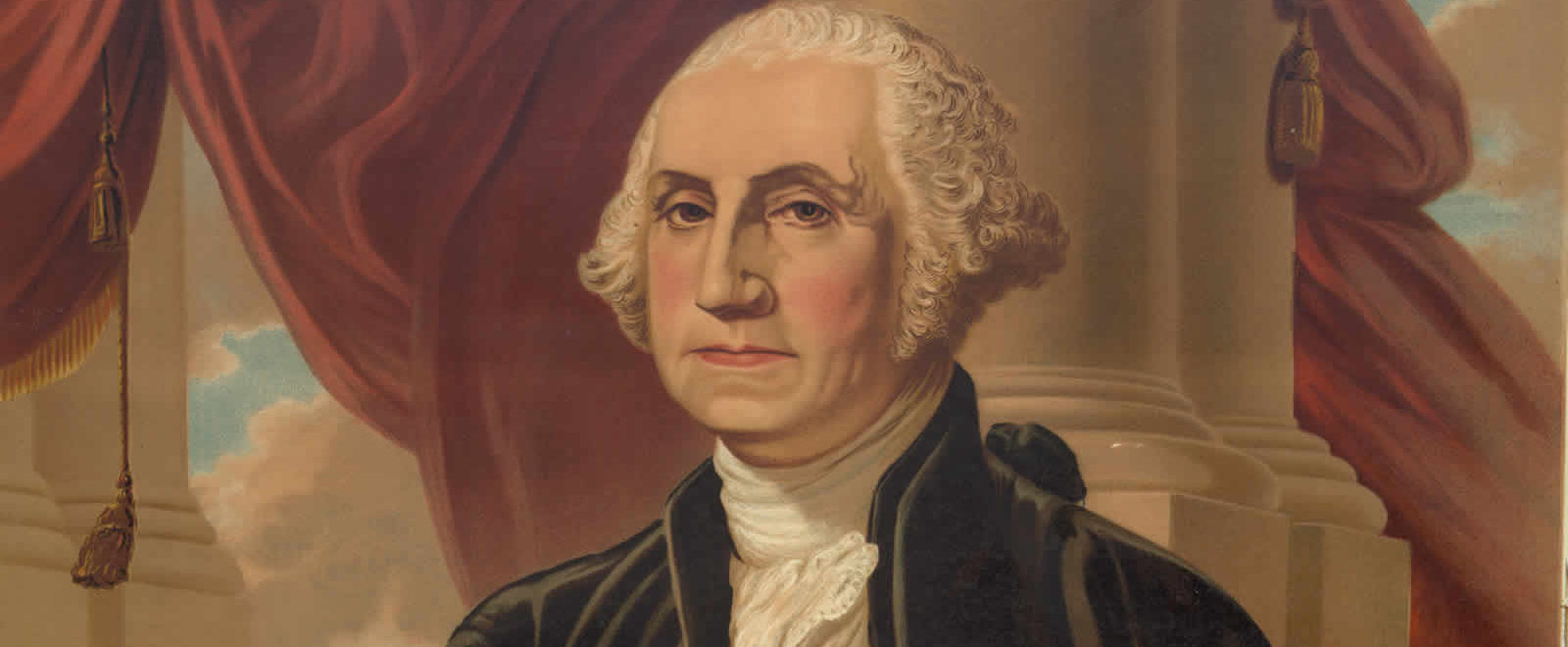LEGENDARY COLLECTOR ERIC P. NEWMAN’S FAVORITE COIN WAS $10 GOLD EAGLE PATTERN THAT HE BELIEVED WAS POCKET PIECE OF AMERICA’S FIRST PRESIDENT
One coin always stood head and shoulders above all the others for legendary collector Eric P. Newman: the unique 1792 Washington President $10 gold eagle pattern.
When Newman passed away last year, The New York Times noted the author of numismatic books and scholarly articles was “a consummate intellectual with an encyclopedic memory, a passion for history, the instincts of a relentless detective and the sharp eye of a trader in antiquarian treasures.”
EVENT
ANA WORLD’S FAIR OF MONEY U.S. COINS SIGNATURE® AUCTION 1278
Platinum Night, Aug. 16, 2018
Live: Philadelphia
Online: HA.com/1278a
INQUIRIES
1.800.USCOINS (872.6467)
HA.com/1792Gold
The same story noted that Newman’s favorite item was a one-of-a-kind gold coin bearing the bust of Washington. “It became a pocket piece of America’s first president,” The Times reported, “with obvious signs of wear from its owner’s breeches in his horseback-riding days.”
As Newman himself wrote in a 1975 article for Coin World, the coin is “unique as the earliest gold pattern prepared for the United States coinage; and it is unique because only one example of the coin was made. What other American coin can command historical and numismatic respect of that magnitude?”
The 1792 Washington President gold eagle is being offered by Heritage Auctions without reserve Aug. 16, 2018, at the American Numismatic Association’s World’s Fair of Money in Philadelphia. One-hundred percent of the net proceeds will benefit charitable causes.
Enlarge
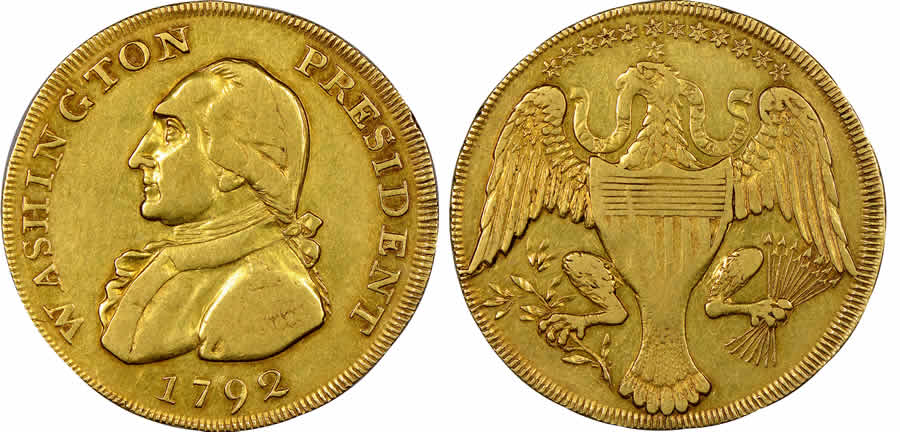
It’s a curious sidenote that although images of our first president are omnipresent on money today, Washington refused such homage when proposed, and no depictions of him appeared on U.S.-issued coinage or currency during his lifetime. “George Washington was my father’s personal hero,” says son Andy Newman. “He considered Washington’s refusal to allow our country’s first coinage to bear his own likeness a perfect example of his humility and willingness to put his country first. This unique gold coin, which we believe to have been President George Washington’s personal memento, is the ultimate artifact of that decision.”
FOREMOST NUMISMATIST
Newman (1911-2017) was the nation’s foremost numismatic researcher and author. His books and articles explored numerous and wide-ranging topics, but Colonial coinage and currency were his principal numismatic interests. He acquired the Washington piece from the famed “Colonel” E.H.R. Green Collection in 1942. This piece, graded Extremely Fine 45★ by Numismatic Guaranty Corporation, displays glowing original greenish-gold surfaces that show the gentle wear consistent with a pocket piece that has seen no actual circulation.
In the 75 years Newman held this and other numismatic treasures, he opined the 1792 Washington President gold eagle was struck expressly for, given to, and carried by President Washington. The provenance is singular in its importance (see “Long Line of Legendary Owners”), shedding light on why Newman held this prized possession in such high regard.
Enlarge
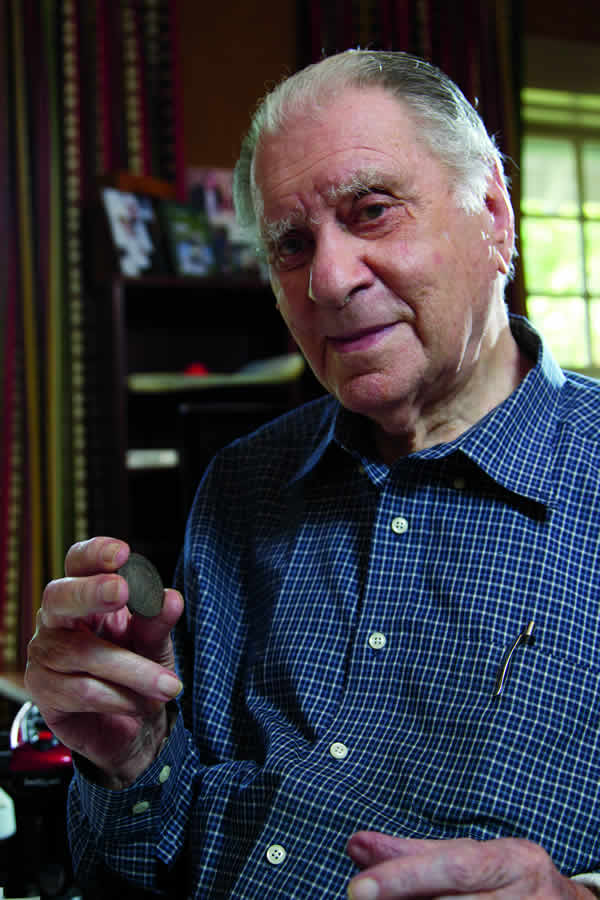
“This gold coin,” Newman wrote in the Coin World article, “was first publicized in 1855 and has never been challenged with respect to being ‘one of a kind’ or being the first gold pattern for a proposed U.S. coin … To prove its ownership by George Washington requires a review of circumstantial evidence, and it is up to the reader to evaluate how convincing that proof may be.”
To comprehend why Washington would have received this gold piece, an understanding of contemporary coinage proposal presentation practices is necessary, and after his explanation of these customs, Newman wrote: “It would be logical to conclude that if Washington was to receive the customary specimen of a proposed coinage, he would have been given the gold one rather than one of a less important metal.”
Legendary numismatist and cataloger of the renowned Parmelee Collection David Proskey (1853-1928) wrote: “It is very probable that Washington had this piece given him, and the slight wear it shows, would indicate its use as a pocket piece.”
ARTISAN REVEALED: JACOB PERKINS
The first owner of record of the 1792 Washington gold eagle pattern was Gustavus Adolphus Myers of Richmond, Va.
Myers submitted a letter about the gold piece to Notes and Queries, a scholarly British quarterly that began in 1849 and continues to this day. It was published, along with a reply, on Sept. 15, 1855. “I have a gold coin in my possession, a rough sketch of which I inclose [sic]; and which, although much worn, is still of the full value of the American eagle, namely, ten dollars,” Myers wrote. “A very intelligent officer of the institution [the Philadelphia Mint] informed me, that he conjectured it was stamped in Birmingham … The coin in my possession was evidently intended for circulation.”
A reply was published, in part reading: “This American piece was struck at Birmingham by Hancock, an engraver of dies of considerable talent. [Several pieces are described]. These are all of copper, and were said to have been patterns for an intended coinage, but not approved.” This reply, based on a “rough sketch,” led to the belief that the coin was produced in England by Hancock, a misconception that has persisted until recently.
A letter dated March 10, 1793, that Thomas Digges penned to Thomas Jefferson refined the improper attribution and stated that Jonathan Gregory Hancock was the die sinker and that Obadiah Westwood’s mint was the manufacturer. However, the Digges letter discussed the 1791 Small Eagle and Large Eagle coppers rather than the 1792 Washington President pieces. In the past, numismatic scholars compared the uniformed busts of Washington on the aforementioned 1791- and 1792-dated coins, and concluded they were identical and therefore produced by the same firm.
However, close and careful observation of the busts reveals a great number of dissimilarities; thus, a different producer was responsible for the 1792 George Washington President coins.
In the August 2010 issue of The Numismatist, John J. Kraljevich Jr. discussed a letter dated Feb. 29, 1792, from Nicholas Pike to President Washington, reading in part: “I have the honor to request your Acceptance of a Medal struck in my presence by an ingenious & reputable Gentleman, who also made the Die, which branch he can execute with great facility & dispatch, & which he will warrant to stand until defaced by usage.”
Kraljevich suggests that the “ingenious & reputable Gentleman” was Jacob Perkins of Newburyport, Mass., who, via fellow Newburyport resident Nicholas Pike, sent Washington one of his productions of this era, potentially a piece from these dies. It would have been logical for Pike to be the intermediary in presenting the coin as he and Washington had previously corresponded: In 1788, upon receipt of Pike’s newly published System of Arithmetic, Washington responded with high praise, stressing his appreciation of it as an American product.
Further supporting his argument is the existence of the obverse die for the Washington Born Virginia piece that was in the possession of descendants of Perkins. The uniformed bust of Washington is identical to that of the 1792 Washington President coins; the Hancock bust of Washington shows considerable differences.
The narrative discussing the letter from Pike provides a convincing argument that the 1792 George Washington President gold eagle pattern was struck in America, specifically by Jacob Perkins in Newburyport, Mass.
This is just the third time in the coin’s history that it is being offered at public auction. With years of research confirming its provenance and origins, the coin is now presented to collectors worldwide.
“The Washington President $10 gold eagle is unique and monumentally important, being the earliest gold pattern submitted for consideration as a United States coin,” says Heritage Auctions’ Co-Founder Jim Halperin. “It may have been George Washington’s own pocket piece. One very fortunate individual is destined to be the next guardian of this quintessential prize.”
LONG LINE OF LEGENDARY OWNERS
Since 1855, only eight collectors have owned the 1792 George Washington gold eagle. Dates following each collector’s name indicate the time of ownership, when known.
- Gustavus Adolphus Myers, Richmond, Va., 1855-1860: First owner of record of the 1792 Washington gold eagle. While prior provenance is unknown, there is a possibility that the coin passed from grandfather to father to son. Gustavus Myers was the son of Samuel Myers, who was born in New York City on April 16, 1755, and the grandson of influential New York silversmith Myer Myers, who was active in freemasonry, and who was almost certainly acquainted with President Washington.
-
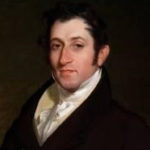 Col. Mendes I. Cohen, Baltimore, 1860-1875:Cohen acquired the coin apparently as a gift from Gustavus A. Myers. The Myers family of merchants and the Cohen family of bankers likely had a close business relationship. There may also have been a family relationship, as Gustavus Meyers was the grandson of Elkaleh Cohen, who married Myer Myers.
Col. Mendes I. Cohen, Baltimore, 1860-1875:Cohen acquired the coin apparently as a gift from Gustavus A. Myers. The Myers family of merchants and the Cohen family of bankers likely had a close business relationship. There may also have been a family relationship, as Gustavus Meyers was the grandson of Elkaleh Cohen, who married Myer Myers. -
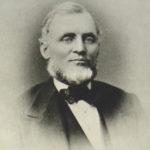 Lorin G. Parmelee, Boston, 1882-unknown:Parmelee was a Vermont-born businessman who started the first baked bean business in Boston. He acquired the Washington gold eagle, probably from Ebenezer Locke Mason, who had offered it for sale in June 1882 for $500.
Lorin G. Parmelee, Boston, 1882-unknown:Parmelee was a Vermont-born businessman who started the first baked bean business in Boston. He acquired the Washington gold eagle, probably from Ebenezer Locke Mason, who had offered it for sale in June 1882 for $500. - Dewitt Sheldon Smith (unknown-1908): Smith, president of the Smith Paper Company, formed a first-class collection of Colonial coins and territorial issues, holding on to his coins until his death in Lee, Mass., in 1908.
-
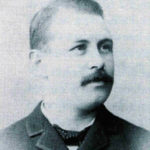 Virgil M. Brand (1908-1926):Brand made his mark as the first president of the United States Brewing Company. He then founded the Brand Brewing Company in 1899 and became a millionaire at an early age. He acquired Smith’s collection intact from his estate in 1908 and listed the 1792 Washington gold eagle as journal number 46483, noting it as “GW pocket-piece.”
Virgil M. Brand (1908-1926):Brand made his mark as the first president of the United States Brewing Company. He then founded the Brand Brewing Company in 1899 and became a millionaire at an early age. He acquired Smith’s collection intact from his estate in 1908 and listed the 1792 Washington gold eagle as journal number 46483, noting it as “GW pocket-piece.” -
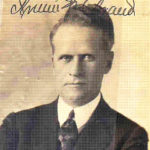 Armin William Brand (1926-1933):Virgil never married and did not leave a will, so his estate was divided between brothers Horace and Armin. Armin was awarded the Washington gold eagle as part of his share of the estate and in 1933 sold it to New York coin dealer Wayte Raymond, who promptly resold the coin to his most important client, “Colonel” E.H.R. Green. Green paid over $2,500 for it, an unheard of sum in his day.
Armin William Brand (1926-1933):Virgil never married and did not leave a will, so his estate was divided between brothers Horace and Armin. Armin was awarded the Washington gold eagle as part of his share of the estate and in 1933 sold it to New York coin dealer Wayte Raymond, who promptly resold the coin to his most important client, “Colonel” E.H.R. Green. Green paid over $2,500 for it, an unheard of sum in his day. -
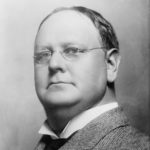 “Colonel” Edward Howland Robinson Green (1933-1936):The son of wealthy businesswoman Hetty “Henrietta” Green, he inherited her vast fortune and began collecting stamps, coins, art and other objects. At Green’s private radio station, Eric P. Newman was part of a group of Massachusetts Institute of Technology students who monitored and sometimes assisted with transmittals from Admiral Byrd’s first Antarctic expedition (a connection that would indirectly facilitate Eric’s purchases from Green’s estate).
“Colonel” Edward Howland Robinson Green (1933-1936):The son of wealthy businesswoman Hetty “Henrietta” Green, he inherited her vast fortune and began collecting stamps, coins, art and other objects. At Green’s private radio station, Eric P. Newman was part of a group of Massachusetts Institute of Technology students who monitored and sometimes assisted with transmittals from Admiral Byrd’s first Antarctic expedition (a connection that would indirectly facilitate Eric’s purchases from Green’s estate). - Green Estate (1936-1942):“Colonel” Green’s estate was administered by the Chase National Bank in New York. His numismatic holdings remained intact until Eric P. Newman negotiated the purchase of some Missouri paper money in 1939. Afterward, the bank over a period of years sold much of the collection to the partnership of Eric P. Newman and Burdette G. Johnson.
- Eric P. Newman and Burdette G. Johnson, 1942:After his initial success in acquiring items from the Green Estate, Newman formed a partnership with his mentor, St. Louis dealer Burdette G. Johnson, to purchase the bulk of the non-U.S. gold portion of the Green Collection. Eric provided the contacts with the estate and Johnson supplied the funding. The partnership acquired the 1792 Washington gold eagle in 1942, and Eric selected the coin shortly afterward as part of his share of the profits.
-
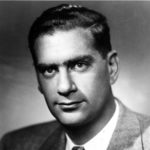 Eric P. Newman (acquired July 1942): Newman became interested in coins at the age of 9 when his grandfather gave him an 1859 Indian cent. Numismatics became a lifelong passion and he formed one of the greatest coin collections of all time. He passed away in 2017 at the age of 106. His collection is being dispersed through an ongoing series of sales by Heritage Auctions. For more on Eric P. Newman and his collection, see Truth Seeker: The Life of Eric P. Newman, by Leonard Augsburger, Roger W. Burdette and Joel Orosz.
Eric P. Newman (acquired July 1942): Newman became interested in coins at the age of 9 when his grandfather gave him an 1859 Indian cent. Numismatics became a lifelong passion and he formed one of the greatest coin collections of all time. He passed away in 2017 at the age of 106. His collection is being dispersed through an ongoing series of sales by Heritage Auctions. For more on Eric P. Newman and his collection, see Truth Seeker: The Life of Eric P. Newman, by Leonard Augsburger, Roger W. Burdette and Joel Orosz.
Items being sold are from the extensive collection of Eric P. Newman Numismatic Education Society (a Missouri not-for-profit corporation) and have been assembled over a period of 90 years. Proceeds of the sale of all items will be used exclusively for supplementing the Society’s scholarly numismatic research efforts and for the benefit of other not-for-profit institutions selected by Eric P. Newman Numismatic Education Society for public purposes.
This story appears in the Fall 2018 edition of The Intelligent Collector magazine. Click here to subscribe.

